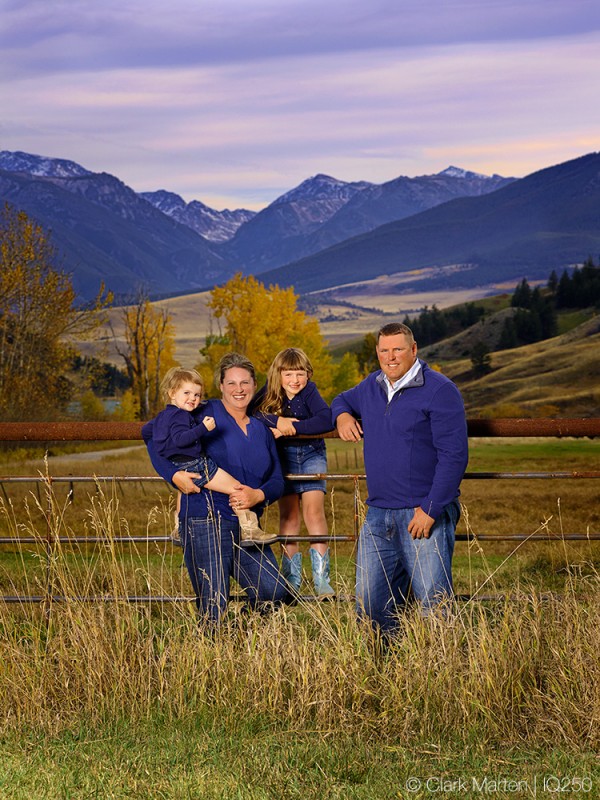Photographer Spotlight Clark Marten
Clark Marten’s photography business is a bit different from our usual tech camera customers, or studio environments. Focusing on family portraiture and high school senior portraits, Clark hails from Billings, Montana. With a friendly approach and years of experience, Clark’s focus on the family market stands out as unique. We sat down on the phone with him recently to ask him how he’s maintained and flourished in a changing photographic world.
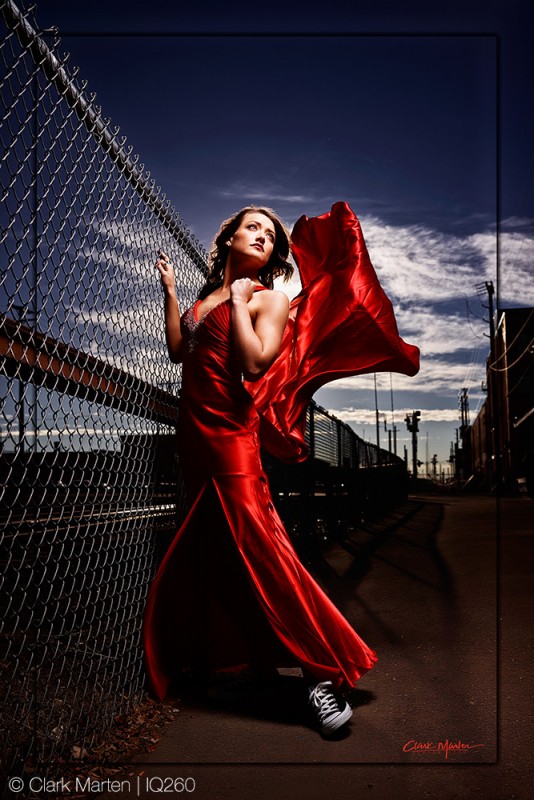
A lot of our clients are centered in the commercial world, or advertising, and then we also do a lot of work with photographers with tech cameras on with landscapes. What drew you to the portrait side of things (specifically the family and senior portrait side of things?
Basically, my degree is in the agricultural world… my family had a chicken farm, and a great life in the ‘50s, ‘60s, and ‘70s. Then, in the ‘80s, the population quit eating breakfast, let alone eggs and so I didn’t have a job. We just about lost the whole farm. Well, I had to find a job, and at that point I was more of a tinkerer. I liked taking things apart. I had a camera, a 35mm, and I said if that’s good enough, why not try medium format?
I had no business, or anything like that, but I bought a medium format Bronica, and started taking pictures of my family. Then the neighbors said, “Hey can you take mine?” It started to grow, and grow, and grow. As a family we had to decide that, “Maybe let’s see what happens.” I remember the accountant we had just rolling his eyes when I said, “I think I’m going to be a photographer.” I didn’t even know what he was rolling his eyes about, but now I do! One accountant told me that it’s at least 95% failure in portraiture right now, because there are so many portraitists out there. We’re all artists, and as artists we want to be pleasing, and we end up giving our work away. But that’s how I got into it, and found a little hole, tried to do the best we could, and we were doing 350 seniors portraits a year out of our basement.
We’re starting to shift away from seniors now, because they’re taking pictures of themselves and using an app, but that can’t really be done with families. We’ve really been marketing towards families, which have been growing immensely for us. The senior market is growing smaller, but is still really good to us at the moment.
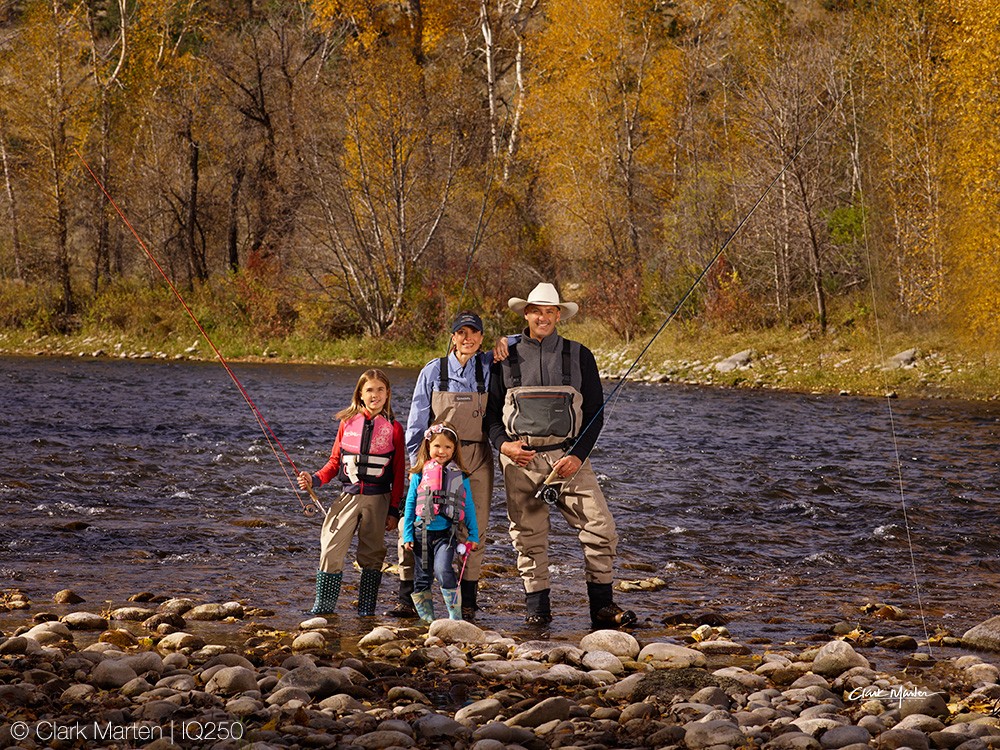
Are you seeing a lot of print sales still for the family portraits, or is it mostly digital copies these days?
We really control our digital copies but here, in Montana, with our small population base (1 million people, so 5 people per square mile) we may still be behind the rest of the country. We’ve really controlled our sales because the only way we can really make a profit is by selling that print of the photo. We’re still controlling that digital file, so we’re not really letting much of that out on the internet.
You’re not really seeing much pushback from clients on that restriction?
The senior market is going down a bit, but it’s more our job to educate our clients. We’re all realizing that there’s going to be a lost generation. If you change your phone, you’re going to lose the photos of our generation. They’ll just be gone. Even when you walk into our studio gallery, we’ve made it a large art gallery-like feel. It’s like, “Ok, there’s a value to have this hanging on your wall.” Even when we’re finishing photographing these families, we know it’s a big investment, especially when they’re younger. We always say, “Thank you, you are amazing because you have recorded your family and will be remembered for so generations where so many others won’t be.” You can always hear them say “Thank you for saying that!”
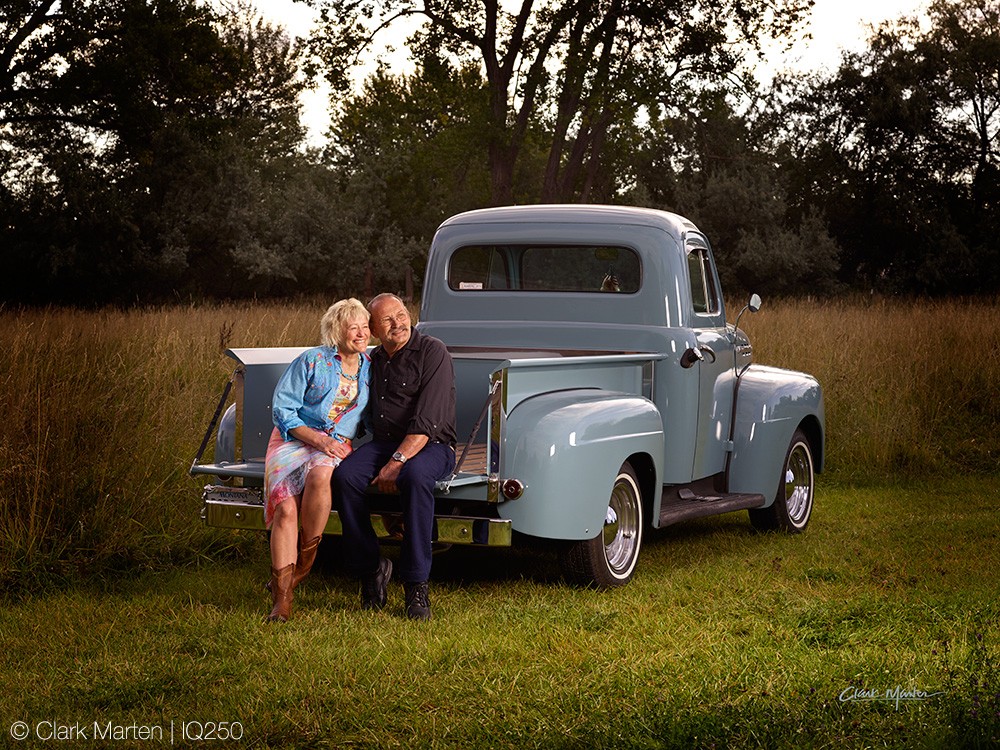
What are you currently shooting with these days? What’s in your bag? And how do you like it compared to the Bronica you started out with?
Well, things have certainly changed! I went from the Bronica to the Mamiya RB cameras, worked with those, and then I was one of the first ones to purchase one of the Kodak dSLRS. You know when you get talking within your circles and you ask, “What did you pay for your silly first digital?” I know that my first 35mm that I bought was a 6 megapixel camera, and we spent $24,000 on it. I remember we switched to Canon, and went through several generations of those. Today, I’m working with a Canon 5D Mark II, a 5D Mark III, and then the Phase One IQ250 with a DF+ body. For lenses, I have a Schneider Kreuznach 110mm, 150mm, and 120mm. The 80mm, 55mm and 28mm I own as well are all the Schneider Kreuznach lenses.
With the portraiture market, but especially with seniors and the family market, medium format digital isn’t really that common. What drew you into this gear? Was it your film history with the Bronicas and Mamiya RBs, or was it something you saw as a unique viewpoint and something you could market and decided to go for?
My wife is a really good person with helping people making decisions, especially with people in our viewing salesroom. Many times she’d pull up these 40x60s prints, and they just weren’t sharp enough when shot with 35mm. It was so funny: we as guys like to do the research, and she’s sitting there going, “Just buy the camera.” Normally it’s the other way around! She saw the value right away, because then we can do the larger prints. Now when I do a 40×60 of a family, I can see those eyelashes in detail again. That was the biggest reason we switched. I was trying to figure out, “Ok, how do I do this?”
I was keeping up with the 35mm world, but it wasn’t quite there yet, so then I started researching fashion people. All of a sudden, it was like, “Whoa, they’re not using the camera that I think is the best!” I think we as portrait people are in this little world where we think we’re doing it all correctly, and when I put my toe out, I realized, “Wait, there’s other systems.”
Now the things I appreciate about it are that yes, it is sharper, but we also have high end clients who used to walk in and say, “Oh yes, I bought my wife that same lens and body.” Now, I have a camera that they go, “Oh, wow, this is different.” I had one or two friends who bought into the did buy into medium format digital a long time ago, and I told them there was no way I’d do that because 35mm is as good as it gets. But now, I’m like, “Oh wow, this is incredible.” When I speak about around the nation now, I tell everyone to start learning about it. I think in the next 5-7 years we as portrait people will be investing in these higher end cameras, and we’ll once again be professional photographers, like we were in the ‘90s with our larger format cameras that the consumer public wouldn’t buy.
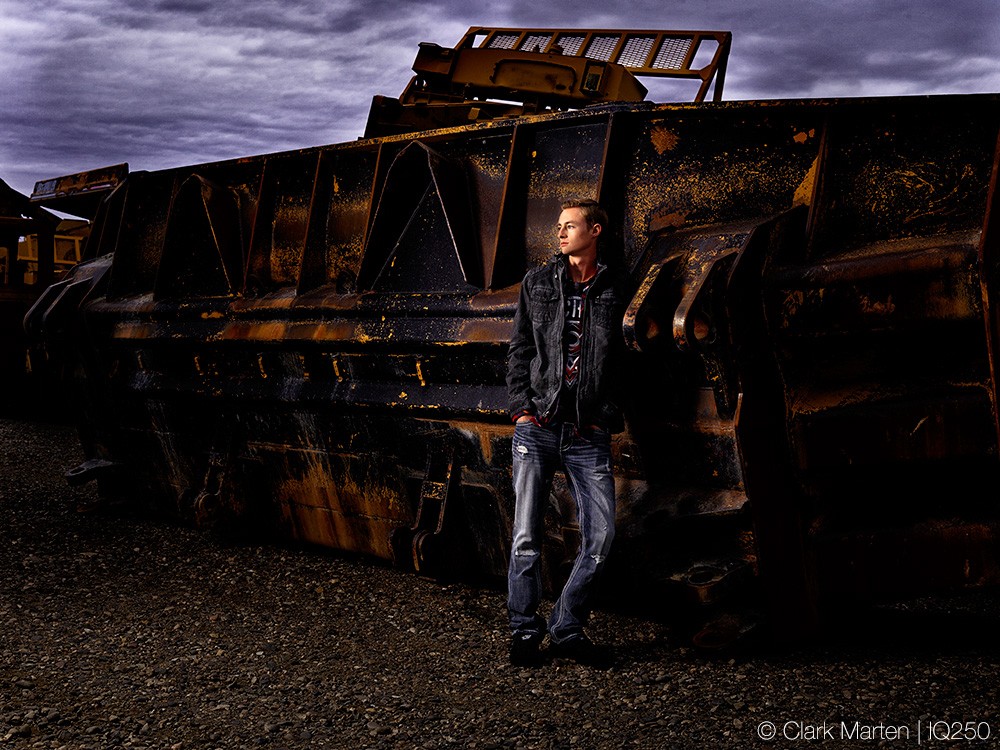
Why choose Capture Integration? What drew you to us?
You know, I talked with Dave Gallagher about that. I bumped into him and CI when I was doing my research. I started to visit, met your friendly guys I was working in Los Angeles. Then one day, I was given the number of Dave Gallagher, and I thought, “There’s no way I have the president of company’s phone number.” I didn’t want to bother him, but at the same time, he took the time to say, “Yeah, I’m here for you.”
That was really eye opening for me. He bent over backwards multiple times to get me setup, even when it came time to get started. I read that someone from Capture Integration had come to their place to help setup the gear. I thought to myself, “There’s no way, I’m in Montana, I wonder what that would cost.” A couple phone calls later, CI said they’d send someone out. I was amazed! Then it turned out it was Dave himself who came out. I just thought to myself, “Oh my Gosh!” I just love that it’s like a family situation, a handshake, just like we do here, and that’s exactly what you guys offered.
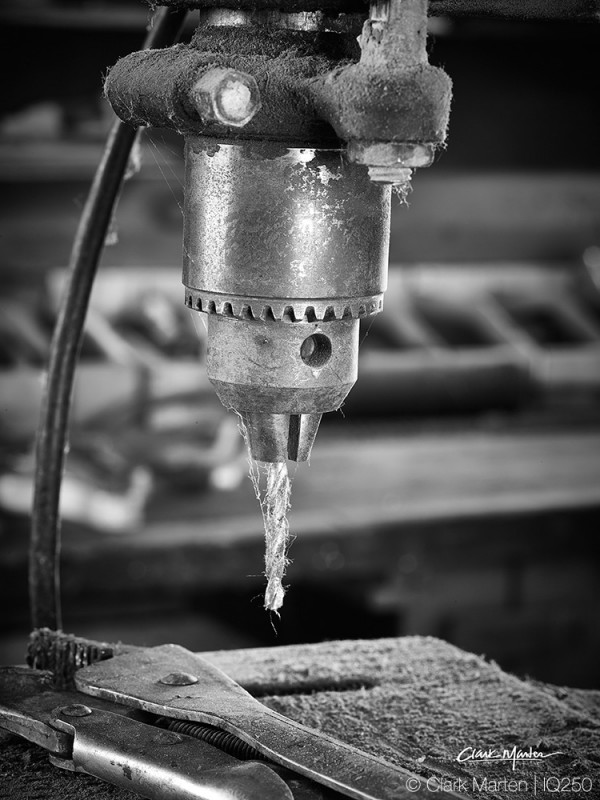
We do pride ourselves on being able to offer that that individualized approach, although we’re also proud that we’re expanding our online approach as well, like with www.digitalback.com but it’s more of a compliment to our one-on-one sales.
It’s hard for you guys, too, as you’re growing as a company to keep it in that small company feeling. Not everyone walks in the door and just buys these things. Once you have that client base, you can invest your time, and really make a connection.
When I was poking around your website, I saw your “Art” section. It was really interesting to see the various parts of your website, and see how you craft your branding. The “Art” section really seems to stand out as being very different. Is that something you shoot as something completely different, to flex your visual muscles?
The art stuff are just things that are my play, I guess. Most of the scenes that are in there are just my local county. Montana has these wonderful mountains in my county on the north side, and these wonderful plains on the south side. I can drive 40, 50 miles and have all of this right here. I get up in the morning, grab my coffee, head out, and see what I can find. It’s more of a relaxation at that point.
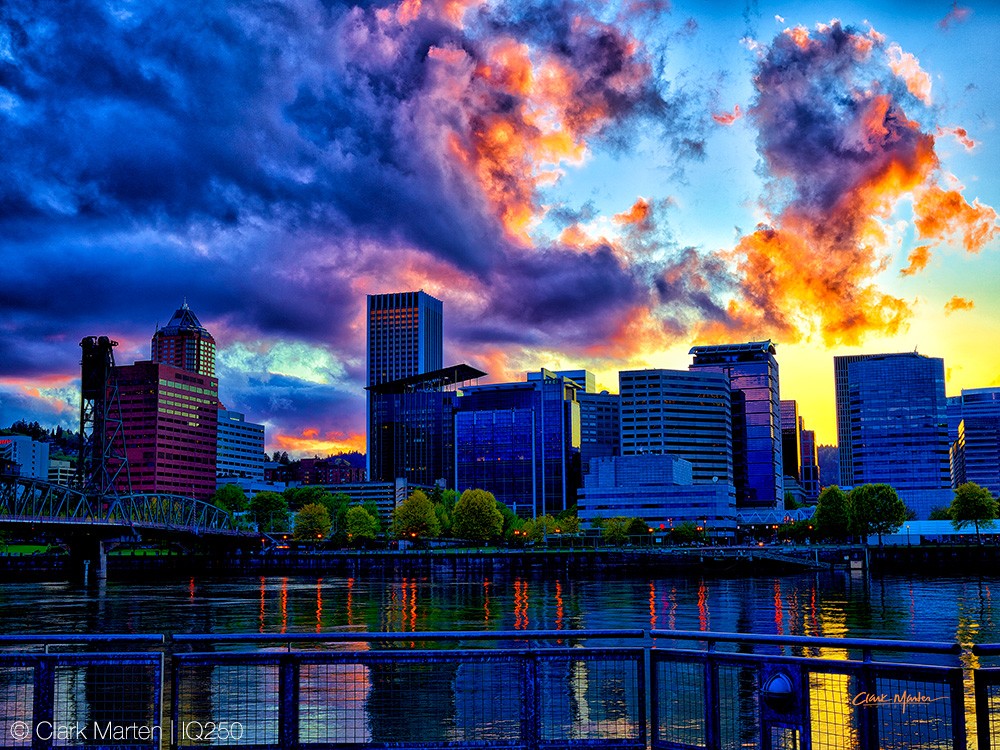
Awesome! I feel you on that living here in New Hampshire, with the White Mountain National forest in our backyard here. Being able to flex your muscles and try something different is great to have.
I can’t say it’s a big seller for us, but it’s something that I will do for charity auctions. Three weeks ago I put a 5ft print in, framed and everything, and it went for $5200. I was blown away but it helps keep our name out there, too.
I saw from your about section that you had done some photos for the president of Harley Davidson, and shot portraits of George W. Bush. It seems that it’s a lot different from what you market for on your main page. How did those shoots come about? Is that something you actively market for?
*laughs* No, and that’s something my son Rudy said after we looked over your questions. “I bet you he read that About page!”
Those are things that are more like our event photography. When George W. Bush came to town, he was speaking to a local organization. We approached the organization, all on the marketing side, and said, “We will furnish you portraits with the President. If you want to sell that moment with the President, then you can raise money, and we won’t even charge you. We’ll say it comes from you, mail it out, and include our own marketing materials and sales brochures with it.”
It’s a win-win. When people are standing in front of my camera, they’re paying $1000 to stand there. We take the pictures, send them the 8x10s, mounted with a gold edge and all that sort of stuff, and give them a little something about the studio. Off of that one event alone, we had a couple families that are over 10,000 orders because we made that connection. We’ve done events with Dick Cheney, we’re doing an event Condoleezza Rice this month, and then one with The Shark Tank’s Daymond John. These are just events that my son Rudy hears about, calls up, and offers our services. It’s simple: they’re high-end donors, we’re with ‘em, and we have an address.
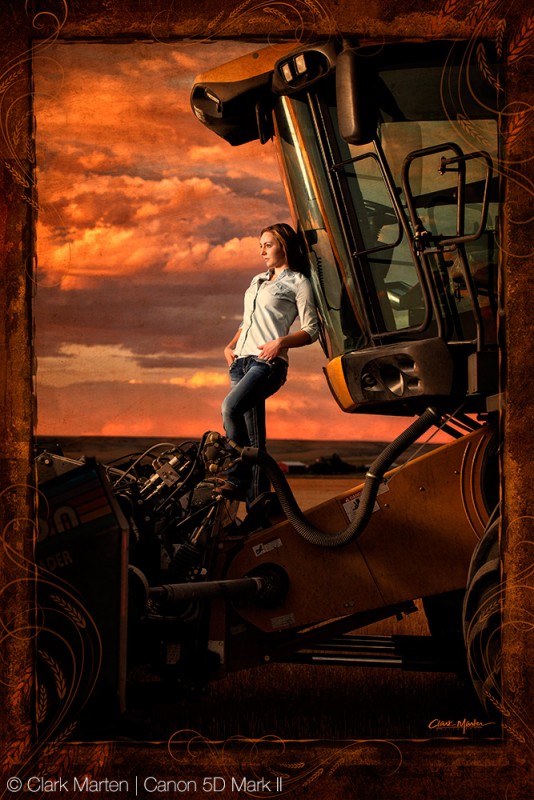
It was really interesting to see that you went from experimenting with your camera to being a husband and wife team, to having multiple people work with you. How did that growth cycle happen? Are you looking to grow or change over the next few years? How do you envision this happening?
We started out small, in our home, and then added on to our home. We were that way until 2012. In 2009 or 2010, our son said he would come home for a couple months and help. A couple more months went by, and he stayed longer, then one day he said, “I’d like to come on board, but I don’t want to live in Columbus.” We figured, “Ok.” We found a property in the historic part of Billings, did a big remodel, and have just continued to grow.
The blessing now, as I look out at our studio now, is seeing that we have a bookkeeper, a marketing person, someone who helps with the camera, another girl who’s just doing phone calls, another person who’s keeping the studio going, another two people doing framing, two of us sitting where production is…Rachael is sitting in another room doing national coaching work, and Rudy’s in another room doing marketing work. Sometimes we’re up to 13 people sitting in here some days.
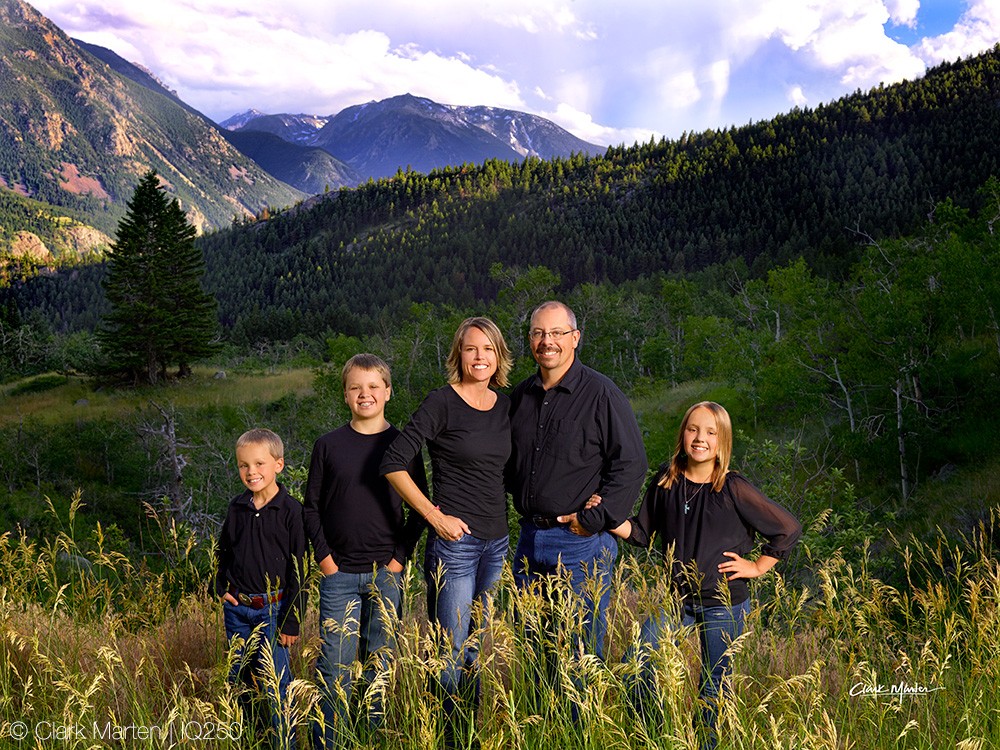
Oh wow. You mentioned you do your own framing; do you have an in house printer as well?
We print everything in house. Some of the prints that are on the wall are 8 feet long from our Canon 44” and a 5100 Canon. The printers are getting old, but you can just keep switching heads and they just keep running. We laminate the prints, we mount them on board, and then our frames come in from Atlanta. Once the orders are placed, the frame comes in, the order gets put together, and gets shipped. What a blessing that this year for us as we broke the million dollar mark.
Congratulations! It’s really refreshing to hear that given the usual tone of people on the internet going “Oh, photography is dead!”
Oh, I know. Everyone is hunkering down in their garage and we’re doing just the opposite. We’re fortunate that we do a fair bit of coaching, and a lot of people are asking, “Ok, what are you doing differently?” We’ll be having a seminar in May, and last year we had people from Portland, Maine to Portland, Oregon and everywhere in-between. They would come in and say, “I want to learn what you guys are doing.”
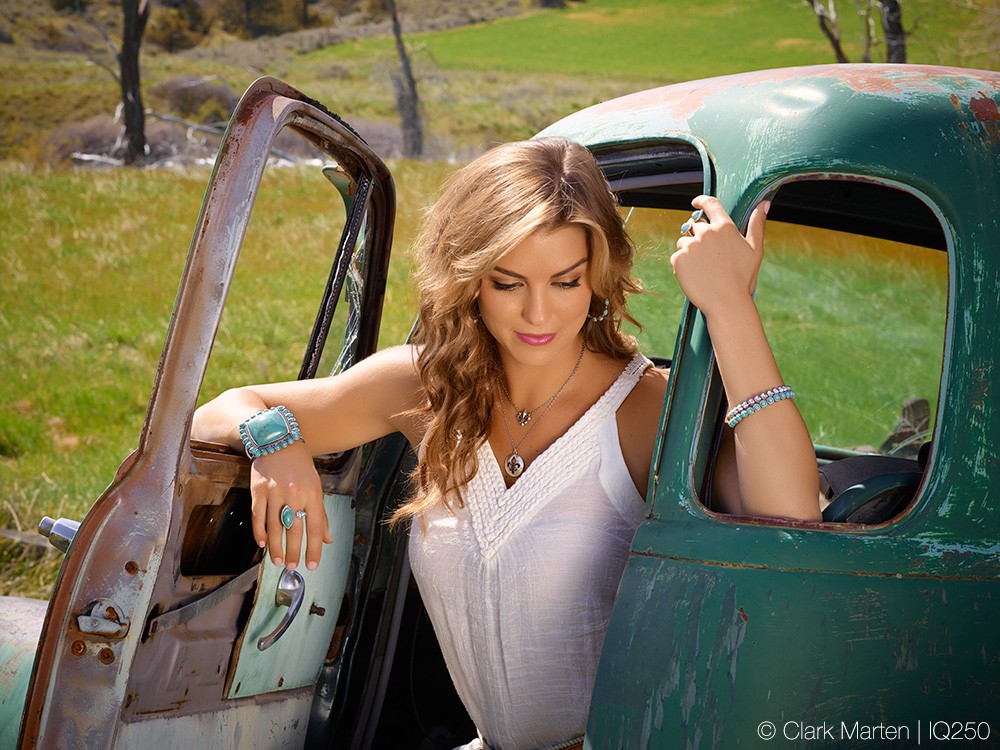
That’s awesome. Sounds like you guys are keeping busy. One of the things I was wondering, with all the things you’re doing for photography…what do you do to unwind? What do you do when you’re not putting together orders or sitting in the studio?
I always think I’m halfway retired already, because the job isn’t that hard when good people surround you. I always hope we’re surrounding ourselves with better people than we are because it makes me look better, too!
But relaxing, things like that? Everything I’ve done in my life I’ve turned into a job. I’ve played music for years and years and years; I still do that occasionally, but now when we’re here, we’ll go back home to our old home, our farm. I’m not too involved with it, but I can still play around a little bit. Probably my one enjoyment is to enjoy a martini.
I can feel you on that. Up here in the Northeast, we’re known for our beer, but I’ve been getting into some spirits myself. It’s a great way to unwind.
Well, try a dirty vodka martini for me, and you can toast it towards Montana.
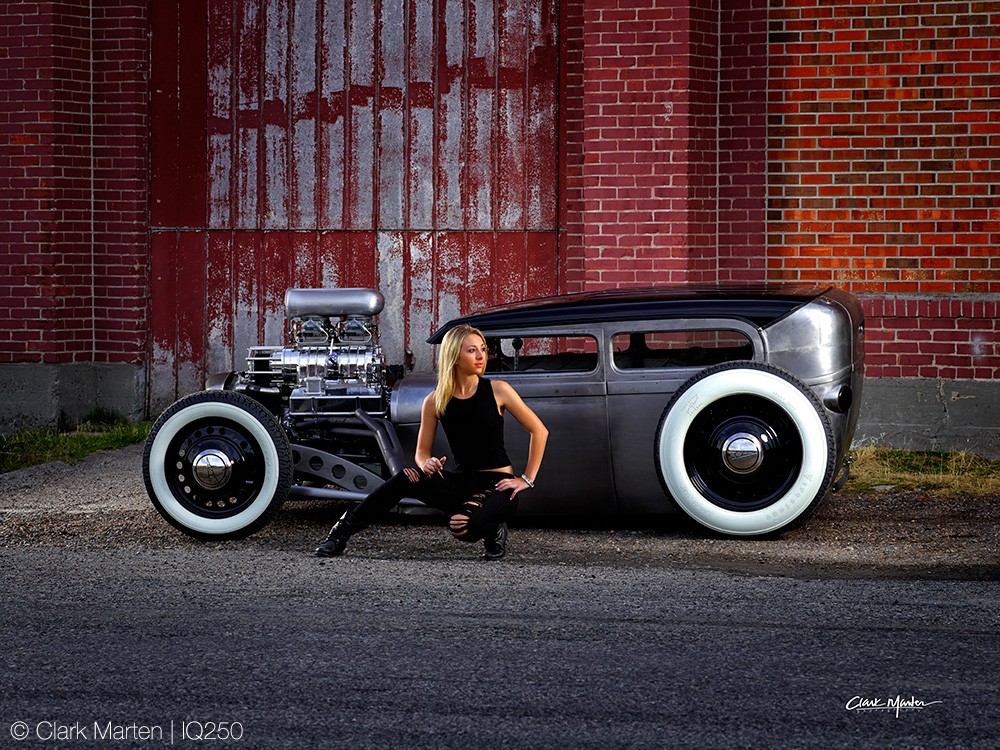
Will do! With all of the changes you’ve made over the past years, you’ve made a big difference with your business. What do you want to see on the horizon? Anything from the photo industry? New gear, software, lenses? Anything like that to enhance your business?
You know, I’m blessed that I can go “This looks interesting,” and then we seem to acquire it. But right now, I’m looking forward to the day that Phase One has a better autofocus system, where I know exactly where I’m focusing. That rascal’s hard in the middle, but I believe that someday that will happen. That’s really my only wish.
